To see everything, to see through: the state and prospects of technical vision systems of combat vehicles
Even in the daytime, the life of the paratroopers during the disembarkation of the BMP or BTR depends on the earliest achievement of the maximum level of situational awareness, not to mention the landing at night during the battle, when the security of the assault forces is almost entirely dependent on sensory technologies.
For more than a decade, military vehicles have installed optoelectronic systems for monitoring and aiming, for example, night vision devices, driver vision improvement systems, and recently they have integrated circular vision systems either into new cars or as additional systems during retrofits.
Nowadays, everything is changing very quickly thanks to the combination of digital sensors and an integrated electronic architecture, with a clear trend to install automatically configurable multi-touch systems that can work together seamlessly to provide significantly better situational awareness (the quality of complex perception of heterogeneous information in a single spatial -time volume) compared with what previously had in the review crews of armored vehicles.
As noted by Finmeccanica, today an increased level of ownership of the situation and the ability to identify, track and mark moving targets in motion is critical and determines the development and expansion trends of this market. Weapon systems and surveillance devices directly affect the effectiveness of a combat vehicle when it performs its primary task, and therefore sensors with the highest characteristics are becoming increasingly in demand.
Meanwhile, advances in microelectronics and optics make night vision systems more accessible, and in this regard, more and more countries want to create an industrial base for the production of components for equipment of this type. The night vision requirements of the driver can mainly be satisfied by short-range sensors (usually uncooled infrared or television cameras), while all-round sensors become an essential attribute of armored personnel carriers and infantry fighting vehicles, since the crew and landing force must be able to have a constant all-round view.
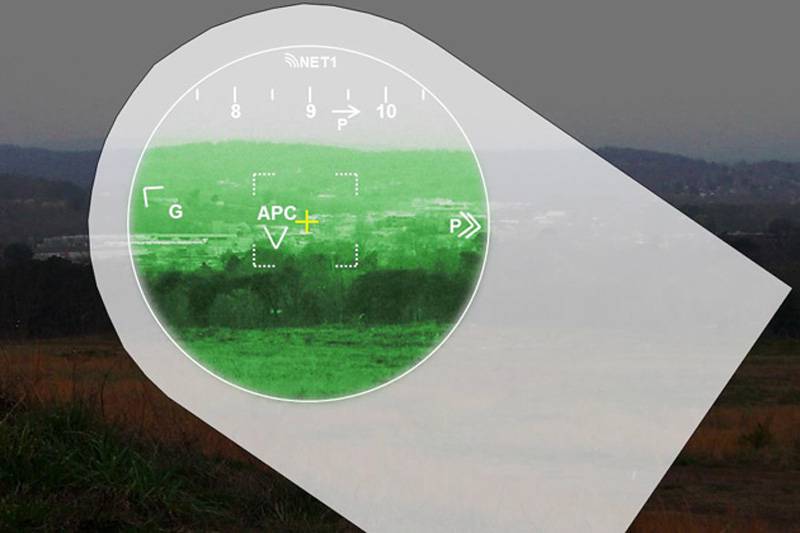
The CV90 BMP, equipped with several cameras that produce an image around the clock, serves as an experimental platform for BAE Systems Battle View 360 augmented reality system, which allows you to get a "circular" image and show it on our crew displays and airborne displays
Using helmet-mounted displays, everyone in the car with the Battle View 360 Augmented Reality System gets a circular view; and it does not have to be derived from the Q-Sight and Q-Warrior light-guide technologies from BAE Systems
Augmented Reality
In addition to these key systems, which have already proven their worth, the connection of sensors with advanced displays and information and control systems allows the crews to move into the world of augmented reality, in which information can be presented to their attention at the right time about their units, enemy, routes, landmarks, obstacles along with thousands of other messages and information. Although this concept is well known in the military aviationground vehicles can soon surpass it in this area, since the overall dimensions, power consumption and cost characteristics of sensors and computing systems are reduced, and the time and effort spent on the certification process is significantly less than in aviation.
In addition, as Dan Lindell, head of combat vehicles at BAE Systems' Swedish branch of Hagglunds, noted, these technologies are changing the machines themselves. "We are changing the design of machines to integrate these systems ... First, over the past five to six years we have doubled the power distributed in the machine, and we see that power consumption is constantly increasing." The company continues to work on an electric and hybrid electric drive (the traditional engine through the generator feeds electric motors) for its cars. Lindell argues that the human factor is also important for optoelectronic technology. “How to present all these sensory data and images that we want to distribute among crew members? This is a very big problem for us. ”
A system is currently being developed in which particular emphasis is placed on situational awareness and the integration of human factors. At the heart of the BattleView 360 Augmented Reality system is a digital mapping system. She collects. Tracks and displays a fragment of the terrain that is of interest to the crew. Wearing a helmet with the BattleView 360 function, those sitting in the car receive an external "circular" picture. At the same time, they promptly receive messages about changing the situation and targeting to open fire. The crew of the combat vehicle can interact with the BattleView 360 in two ways, through a helmet or tablet. BAE Systems, in collaboration with its UK subsidiary, is currently demonstrating its BattleView 360 system, which is installed on the CV90 BMP, in several countries. Program Manager Andy Thane is very familiar with the market for visualization and situational awareness for military vehicles. "We definitely see a growing interest throughout Europe and in the USA, especially in the research area, to situational awareness systems for these combat vehicles, especially for armored personnel carriers and infantry fighting vehicles, and in the future for other types of vehicles."
Mr Thane said the company has a number of contracts related to various British and American research projects, in which other companies are also involved. “The systems that we develop and study add opportunities to the driver, gunner and commander of the vehicle and provide them with much better all-round visibility than the one they have with the current periscopes or very narrow slit windows common to military vehicles.” For the landing in the stern of the car, possession of the situation is important, since it needs to know what awaits him before disembarking from the car. "It can be every single paratrooper, but most likely, the squad leader, followed by his subordinates."
As for geography, “there is interest and activity in the United States and throughout Europe,” Thane noted, for example, all seven CV90 machine operators in Europe (Denmark, Estonia, Finland, the Netherlands, Norway, Switzerland and Sweden) are considering the possibility of integrating Battle View 360 when upgrading their machines. In the US, military organizations, including the Doctrine Development and Combat Training Command (TRADOC) and the Telecommunications Electronics Research Center (CERDEC), are working on situational awareness systems, like the British Defense Science and Technology Laboratory (DSTL).
Integration issues
One of the problems associated with the integration of such technologies is the design features of a specific model of a combat vehicle, for example, for a circular review system, it is necessary to find a place on the hull, power up and lay data lines. In addition, camera images should be displayed on screens in order to provide simultaneous seamless visualization for everyone sitting in the car; All this requires significant computing power, knowledge of human factors and experience in the development of specialized software. “The data processing itself is not such a big problem, the problem is to create sufficiently strong displays designed for use on military vehicles,” Thane continued. - Our displays were previously installed on jet planes and helicopters. To take this technology and make them durable and protected from inept actions is what really is a difficult, but doable task, because the optical components we have are strong enough and compact. ”
In this regard, it is worthwhile to dwell on various technologies of helmet-mounted displays, including optical waveguides used in the Q-Sight system by BAE Systems and its modifications, although this does not mean that Q-Sight technology is necessarily integrated into the Battle View 360 system, since the company is developing other small hardened display technology. Thane remembered the savory remarks of the soldiers moving around with the displays turned on inside the car, especially when they hit their heads on something. "No matter how, we were able to go through these operating conditions."
In addition to the conversion protocols that are typically used to deliver data from different sensors from different manufacturers to one network, there is the problem of docking or combining images. “This means combining images from visible and infrared sensors that have different operating principles, different lenses and fields of view, and realizing their compatibility with each other,” said Richard Hadfield, technical leader of the Battle View 360 project at BAE Systems. “We change the scale in real time and combine the image in order to create a virtual dome and then insert these sensors into this virtual dome.” Another technical problem mentioned by Hadfield is to simultaneously track the movement of the heads of several people, because they can look in different directions. He said that the company has a solution for this, it includes a tracking device in each helmet and a set of tracking sensors distributed throughout the entire interior of the vehicle.
Synchronization with the outside world of displayed images is one of the most important problems of ergonomics. “You need to ensure that people using the system do not suffer from ailments due to its delays or latency,” Hadfield said. “We think we coped and removed the delay, but I cannot say how.” How users interact with the displays they wear on their heads is also a significant problem and to solve it, BAE Systems introduced into the system an element based on “very reliable” MIME software (Map and Image Management Engine), which effectively works with mid 90-s on various British military aircraft. “We adapted this tool for ground use and included a lot of functionality that is responsible for handling the terrain, so we can, for example, plan routes using terrain characteristics and all this is feasible for a vehicle of any type,” Hadfield added.
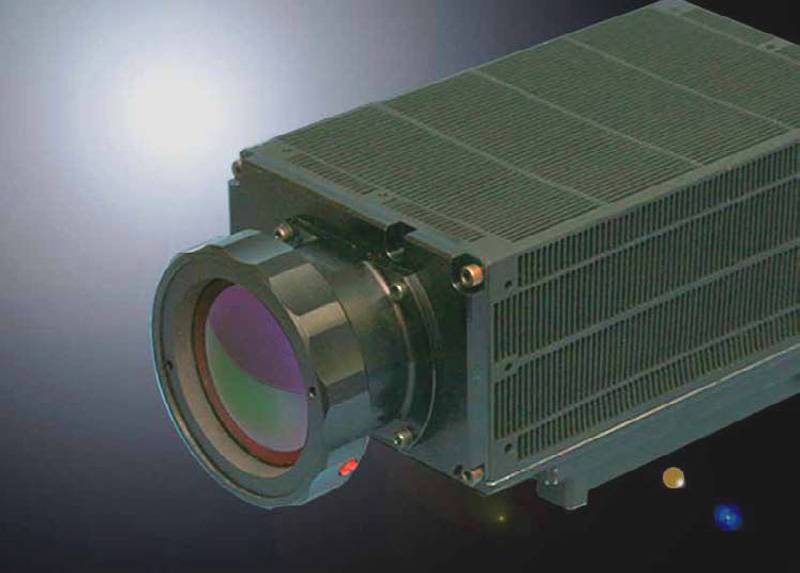
Finmeccanica’s premium thermal imaging cameras use a third-generation, high-resolution MCT matrix that allows you to capture images of excellent quality, day, night, and with poor visibility. These cameras can be integrated into a variety of vehicle imaging systems.
Information output
The MIME software interacts over the machine’s communication network with a battle management system and / or a target acquisition and acquisition system, comparing the received data and filtering it to give each user the necessary and precisely dosed information and eliminate redundant information load. “Getting too much information is almost as bad as providing too little information,” Hadfield said. “That is, we face another task: what should and what should not a particular person see?”
Peder Sjolund, one of the developers of the BattleView 360 system and the program manager at BAE Systems Hagglunds, said that they worked with experienced crews of military vehicles to understand what information they needed in each situation and what limitations should be there. “We invited a couple of commanders tanks and BMP, to begin a discussion of how much information they can process in various scenarios, he said. - One of the scenarios may be a march, and the second may be a melee. If you are on the march, then you are really focused on the route, where there will be the following collection points, how long you will go, what is the fuel supply and what speed is needed to get to the collection point at a given time, ”added Headfield. “But then, as you approach the target, threats begin to appear, then you enter the various stages of the combat mission and obviously the information that you see will change.”
Xiolund said that the company combined this incoming information with the concept of helmet-mounted displays of aircraft crews, which is the best way to get useful information for those sitting in the car when the entire internal space is not filled with screens, often there is not enough space or available energy for them or other at the same time. The module on each helmet has an individual head movement sensor and a device for connecting to a mini battle management system based on MIME software, which allows you to give each user a picture of the correct sensor with the imposition of the necessary tactical information.
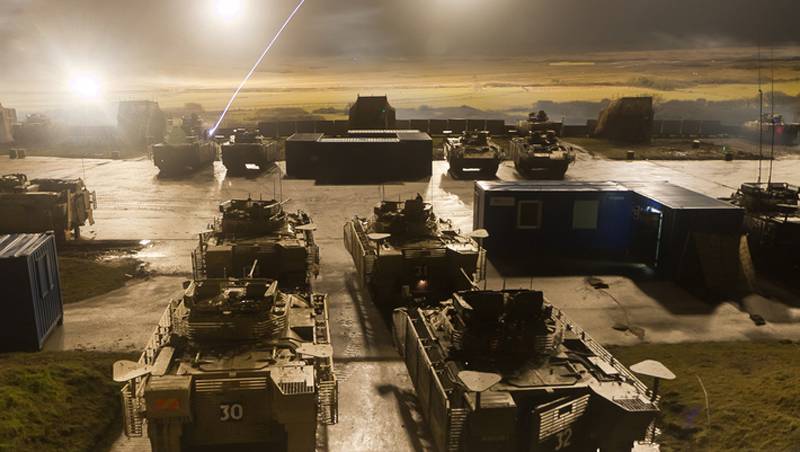
Most of the armored vehicles do not allow a good overview, so camera systems of all types are widespread, most of which include night-vision cameras of CMOS technology (the complementary structure of metal-oxide-semiconductor)
More sensors
According to Finmeccanica, while the number of sensors installed on military vehicles continues to grow, the combination of technologies is fairly stable, although they are constantly being improved. A typical aiming complex includes a night vision sensor (usually infrared), a day sight (either optical or television) and a laser range finder. In order to meet special requirements, additional sensors such as laser illuminators / indicators are often integrated. There are enough TV and thermal imaging cameras for driver review and situational awareness systems.
The automatically configurable optocoupler remains attractive for installation on combat vehicles; for example, this trend is reinforced by the popularity of a family of gyro-stabilized day and night observation and aiming systems from the POP (Optronic Payload Plug-in) company Israel Aerospace Industries. The POP family includes six systems, each of which has its own configuration. At the same time, all of them have a high level of modularity and can receive special “sections” with those sensors that are defined by the user's requirements. If necessary, these sections can be replaced in the field, and in the future they will allow for easy upgrading of POP family systems as new optocoupler technologies appear.
Uncooled infrared cameras are becoming increasingly popular in “common” applications, for example, they can improve the quality of driver’s vision, but cooled infrared cameras remain a must-have attribute when high-quality visualization is needed. As for weapons sights, traditional long-wave (8-12 microns) devices are currently evolving into devices with several ranges, that is, by adding medium-wave (3-5 microns) sensors. In some common low-level applications, that is, in tasks where visibility does not play a big role, sensors with operating in the near (long-wavelength) IR region of the spectrum are now used with inexpensive television cameras.
Finmeccanica believes that the technology of manufacturing circuits on the complementary metal-oxide-semiconductor (CMOS) structures will gradually replace the CCD cameras in the visible range, and more exotic technologies, such as the far infrared (IR) region, will be further developed. According to the company, the capabilities of this region of the spectrum differ from the mid-wave and long-wave IR ranges. It may be useful for some specialized applications, although the relatively high cost may currently limit the demand of military structures for it. In addition to the development of technologies based on less well-known wavelength ranges, continuous advances in sensor technologies allow the creation of both cooled and uncooled infrared detectors with smaller matrixes that have higher resolution and / or smaller optical (aperture) diaphragms.
Typical modern vehicle displays are hardened screens with special elements to maximize the quality of monochrome images from infrared cameras. The newest systems are networked multifunctional flat-panel LCD panels with software that allows you to display multiple images simultaneously, overlay high-resolution graphic images and improve image quality. Their development, determined by the availability of technology for commercial panels, is moving towards better picture quality (including higher definition), greater bandwidth on the internal network, and greater computational power.
Pros and cons
With regard to the development of helmet-mounted displays, Finmeccanica called the strength and weakness of the existing technology. Among the advantages are the compactness, the ability to provide work both when worn and when the helmet is removed and the relatively low power consumption. According to the company, their disadvantages include cost, weak protection from damage, rapid owner fatigue and, possibly, limited ability to perform certain tasks in the car, as well as the need for a backup device. The conclusion made by Finmeccanica from an analysis of the advantages and disadvantages is that in the near future, helmet-mounted displays will not be widely used in military vehicles. However, the company is more optimistic about the prospects for augmented reality (adding imaginary objects to images of real-world objects, usually auxiliary and informative properties), which can be obtained without helmet-mounted displays. “Augmented reality has tremendous potential because it allows you to improve the presentation of information to the crew, which can help with detection and targeting.” Not surprisingly, almost all customers mainly focused on price and performance, but Finmeccanica emphasizes that these factors depend on the application. As a rule, the customer is ready to invest more when system-level solutions are needed (for example, fire control or awareness of the situation) not only because they are more expensive, but mainly because the requirements are more stringent and this eliminates the use of cheaper and less functional equipment from the lower segment suppliers. With less stringent requirements, the emphasis on cost allows you to use a wider range of competing suppliers.
Opinions of experts
Emmanuel Bersier, sales manager at ULIS (a division of French infrared technology company Sofradir), which manufactures uncooled thermal imagers, noted that the demands of the military are becoming more and more specific with regards to the desired functionality. This includes improving vision systems for drivers, increasing local situational awareness to protect vehicles and integrating into remotely controlled combat modules (SDMs), for example, for targeting weapons. “We see two main tasks,” continued Bersier. - First, enhancement of characteristics in order to get a larger field of view, for example 180 degrees for a driver's vision system, or increase the recognition range of a local situational awareness system and an SDSM ... Second, developing equipment with smaller sizes is easier, with less power consumption . While we sometimes deal with large machines, the available volume for any equipment is always a problem. ”
As for potentially breakthrough new technologies, Mr. Bersier believes that CMOS sensors covering the visible spectrum and the near-infrared spectrum are a good candidate for promising all-weather driver vision devices, the same applies to short-wave infrared systems. “New technologies will experience difficulties in achieving the required level of sophistication and qualification for such applications. We'll see what happens in the next ten years, but thermal imaging sensors are already based on proven technologies that continue to increase both the possibilities and the cost. ”
On the question of where, from a geographical point of view, the entire process of development and procurement is being conducted most actively, Dan Lindell said that the West is speaking and conducting tests, while the East is already supplying finished products. “We see that many things that are discussed and shown at exhibitions are really integrated in Russia, as well as in China. We see rather obvious needs for systems of this type in Southeast Asia, while Western countries are talking and trying to do something, some to a lesser extent, some to a greater extent. ”
Materials used:
www.leonardocompany.com
www.baesystems.com
www.iai.co.il
www.ulis-ir.com
www.techcult.ru
www.wikipedia.org
en.wikipedia.org
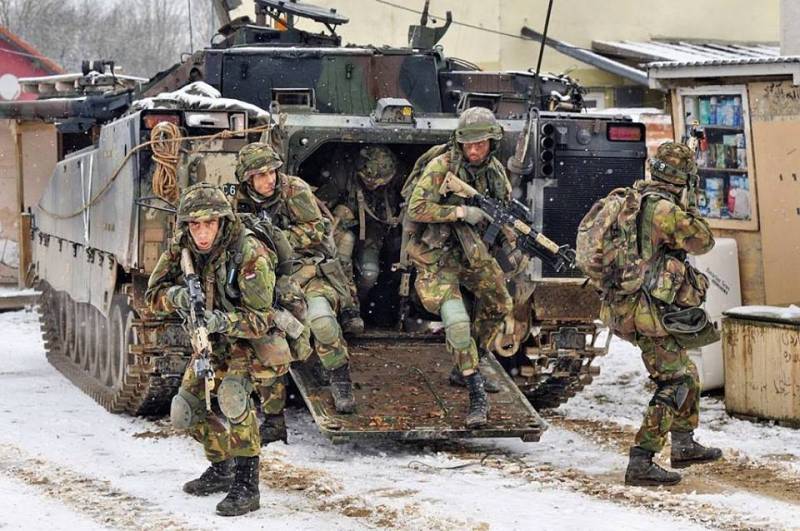
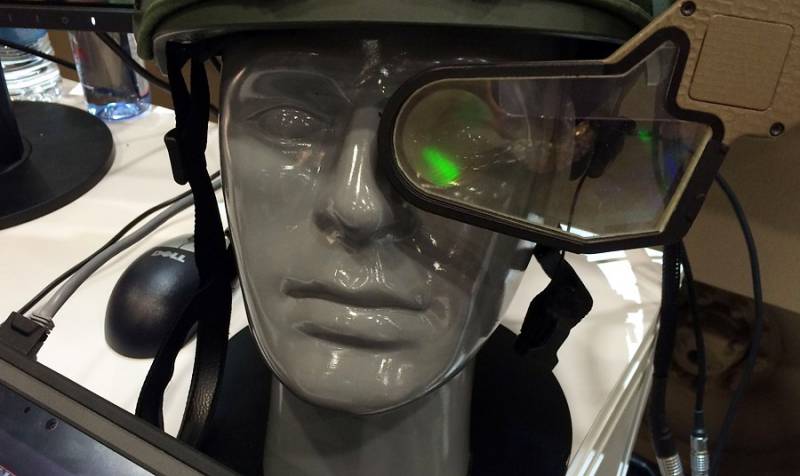
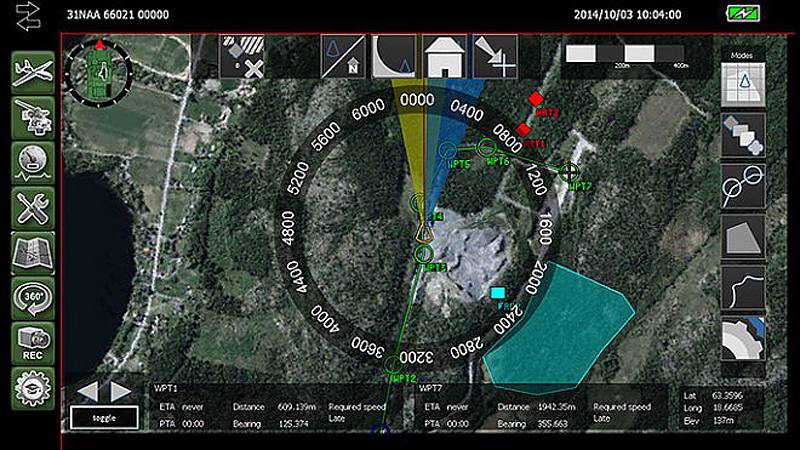
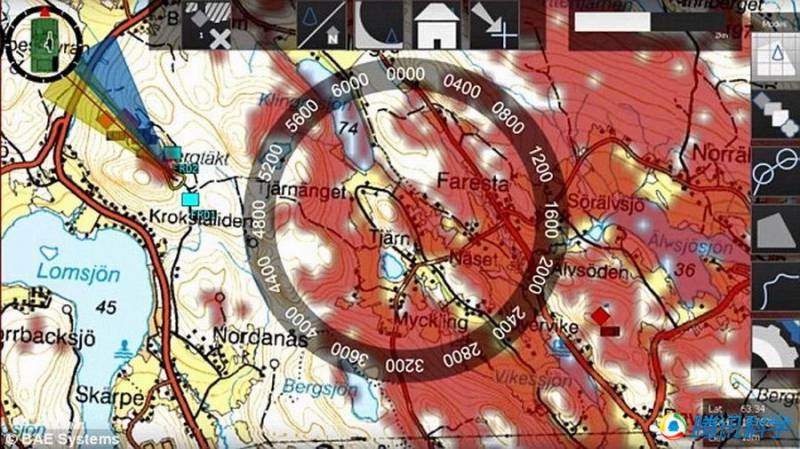
Information